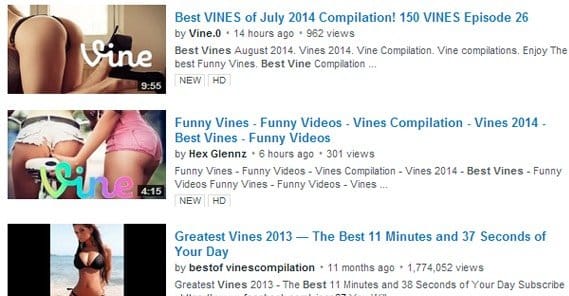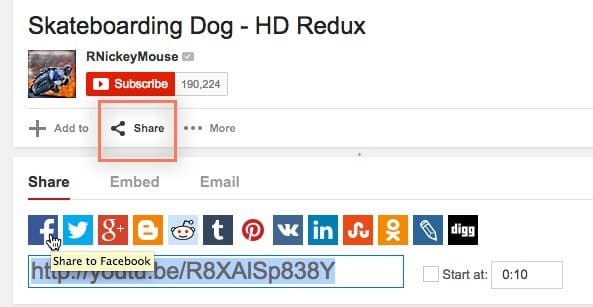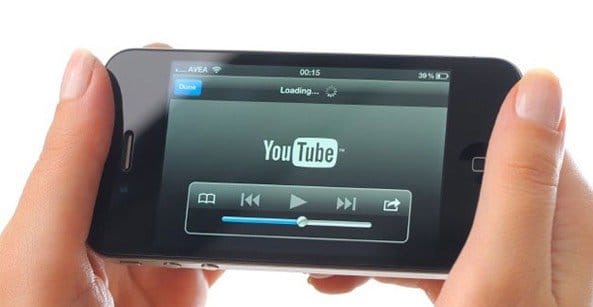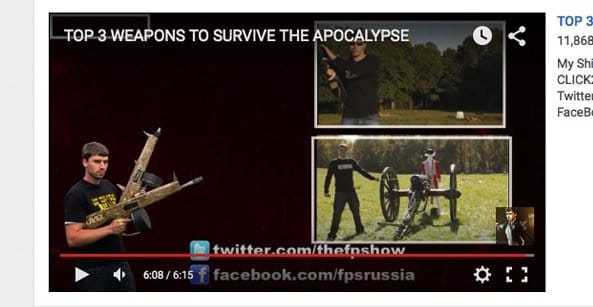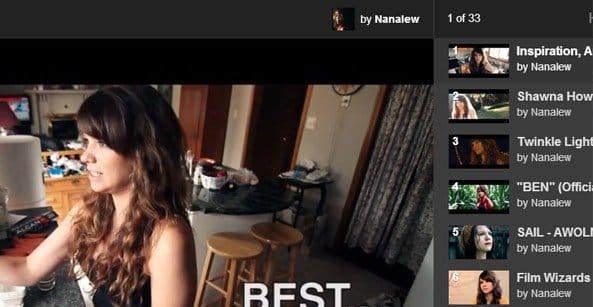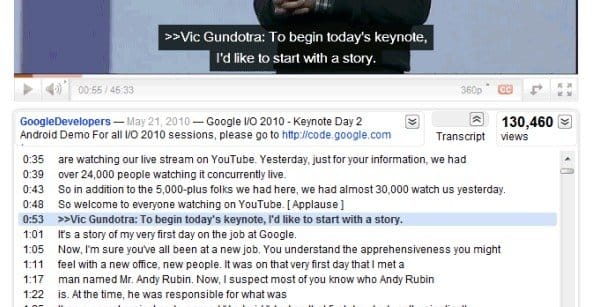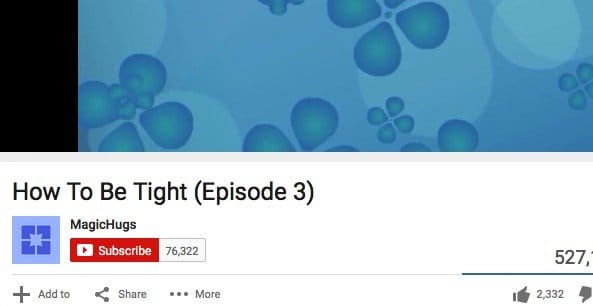20 Growth Hacks to Get More Plays on Your Video
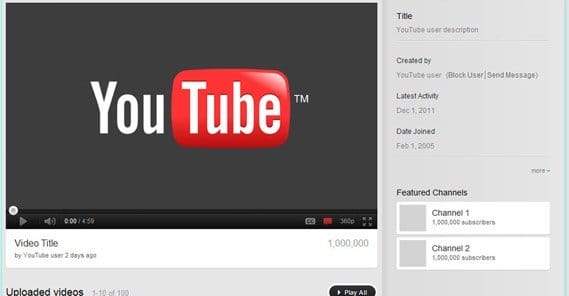
Video marketing can be incredibly successful these days. It’s not like a dozen years ago, where people with powerful enough computers and fast enough internet connections were rare. Streaming video is so normalized to our culture that even our basic cell phones can do it. Heck, even most modern video game consoles can do it, as an afterthought feature that doesn’t even need to exist.
For the purposes of this article, I’m going to assume you’re using YouTube for your video marketing. Before we begin, though, I want to make a quick note about YouTube and Facebook.
Facebook has been very quickly becoming one of the top players in web video. By some accounts, if you go by sheer number of views, Facebook has actually surpassed YouTube as a video host. There’s some questionable accounting behind these figures, though. YouTube heavily filters their views for legitimacy, while Facebook’s autoplay tends to artificially inflate views. I believe YouTube is still the top dog, but Facebook is nevertheless growing at an astonishing rate.
A good video marketing strategy will use both sites in conjunction. Facebook would prefer that you host a video on their platform rather than share a link, but plenty of people share links anyways. Here’s what I recommend.
- Post your video on YouTube and use that YouTube link for the majority of your marketing. YouTube allows you to embed the video in your blog posts, and it works well sharing the link on other sites, like Twitter and Pinterest.
- Post the video on Facebook a well, solely for your Facebook marketing. Some people will share your YouTube link on Facebook, and that’s okay. You should just focus on promoting the native Facebook video on that platform.
Now, on to the tips you can use to grow with your video marketing without throwing money at advertising.
1. Research and Optimize an Excellent Title
A lot of work can go into your video title, you might be surprised. You have to know what sort of titles are doing well in your niche, and with other similar videos. You have to know what sort of titles attract your audience specifically. You have to go with something interesting and specific enough to avoid the problems that come with clickbait, and you need to go with something that has your keywords in it so it’s picked up by both YouTube and Google searches.
YouTube doesn’t make it easy to test titles, unfortunately. It doesn’t really benefit you to upload two copies of a video with different titles, and changing your title will confuse users more than the changing title on a blog post might. It also hinders people who might want to find the video again later, but don’t remember specifically what it was called.
There is a good way to test titles, but I’ll go over that later, because it’s not so much about the title of the video itself, so much as it is the title you use when you share it.
2. Chase Trends and Capitalize on them Quickly
Newsjacking, as well as following trends in general, positions you to have popular trending videos that show up in prominent locations. You probably won’t reach the front page of YouTube itself – not that such an honor is as valuable as it used to be – but you can certainly show up in a lot of related video feeds.
The number one requirement for appropriate newsjacking and trend chasing is the ability to produce videos quickly. You need to be able to go from brainstormed idea to concept to script to filming to editing to release in just a few days. If you take any longer, what you’re billing as news becomes old news. You can’t newsjack something that everyone has already passed over.
The second requirement is awareness of the topics you can newsjack. This typically requires a system of Google Alerts set up for keywords in your industry, so you can identify newsworthy topics as they are coming up.
3. Use Low-Key Clickbait
Clickbait is astonishingly effective, and it’s a very dangerous technique to use. The problem is, it’s almost like a black hat technique. It gets a lot of initial investment, but unless you have the value to back it up, you’re not going to succeed in the long run. People will associate your brand with thin clickbait and will stop paying attention to you.
When I say low-key clickbait, what I mean are titles and descriptions that give enough information to hook a user but not enough to tell them everything they need to know. It’s amazing to me how many brands will put so much information in their video descriptions that the user doesn’t even have to watch the video. Now, it’s one thing if you’re making a video version of a blog post and it’s mean to be an alternative consumption method. When it’s supposed to stand on its own, though, that kind of circumvention of utility just does you no favors.
4. Build a Comments Community by Responding
Yes, I know. YouTube comments have become a joke across the internet and around the world. Some of the most obscene, inane, and off-topic posts ever made have been made on YouTube comments. I’ve seen pretty much everything. I’ve seen racism, I’ve seen insults, I’ve seen political bickering, I’ve seen medical advice, I’ve even seen fanfiction-style roleplaying in the comments of YouTube videos that have nothing to do with any of those topics. Entire browser extensions have been made specifically to filter, hide, or entirely replace YouTube comments with more benign and easier to understand text, like Nietzsche.
That said, the very existence of the comments means that people use them, people read them, people look at them. It’s your goal, then, to make use of those comments as a means of socializing with your followers and viewers. To this end, you need to adopt a comments strategy. My ideal strategy has three pillars.
- Respond to mid and high quality comments to encourage discussion and make viewers seem welcome, even on older videos.
- Actively and aggressively filter and remove comments that are low quality, off topic or toxic to your community.
- Make use of interesting and useful information or questions from your comments as fodder for future videos, to further make sure your users feel welcome.
5. Funnel Other Social Traffic to YouTube
Facebook may not be the best social referrer for YouTube these days, but other social sites certainly work. I recommend creating special images to go along with your links. You can make a short gif and attach it to Twitter. You can make a quick clip and upload it to Vine. You can pin a special image – other than the video thumbnail – to Pinterest. It’s up to you which social networks you use and how you use them, just don’t shy away from posting your videos.
6. Split Test Titles When Sharing Socially
Remember how I mentioned testing different video titles? This is where that testing comes in. On most social networks, when you post a video, a preview will appear. You can then customize that preview in a few different ways.
The primary way you’re looking to test, here, is to change up the title. Promote different titles at different times, and see which one performs better. Run that title longer and, if you want, change the primary title of your video to that new title. This is a bit of a lengthy process and I really only recommend it if the rewards are valuable, however. If, for example, you only pull in a 1-2% difference in viewers, it might not be worth the effort. Later on, if a title test shows a 20% increase, that’s a change you really want to make.
Of course, a title that performs well on Twitter might not perform well on YouTube, and vice versa. Sometimes it’s just a good idea to run the customized title for your promotional material and a different title for the video itself.
7. Customize Your Video Thumbnail
This one is easy. When a video ends, a grid of a bunch of different potentially related videos appears. At the same time, there’s a whole string of related videos on the side of the YouTube page itself. All of these videos have thumbnails, and all of these thumbnails – generally – are customized. Quite often, you’ll see pictures and scenes that don’t actually happen in the video. This is abused by poor marketers by including sex appeal in their thumbnails, or at least misleading situations. You don’t want to be a poor marketer.
The easiest thumbnail to create, and one of my favorites, is a simple title card. This works best when you include a logo or recognizable graphic, a solid background, and a keyword, title, or number. It’s best used on video series’ where you have episode numbers and can just increment the number. In fact, if you have several different series’ you can create different branded title cards to make it obvious at a glance which videos belong to which series.
8. Tend Towards Shorter Videos
This is a simple “hack” that many businesses follow, but they don’t particularly know why they do. Years ago, YouTube implemented a mandatory length limit for videos at ten minutes. These days, you can post full length movies and no one bats an eye. That’s not good marketing, however. The longer a video is, the longer it takes for a user to get your point, and the more likely they are to drop out along the way.
Ideally, you’ll want to keep your videos short. Somewhere in the neighborhood of 3-5 minutes tends to work well, although you can easily stretch out to 10 if you have a very detailed topic and you want to cover it in depth. Try not to stray too far under 2 minutes long, unless you’re just making a short teaser video; those shorter videos can just be scrunched down into vines or Instagram videos instead.
9. Use Annotations for Expanded Information
In a blog post, you use links to link to sources or other sites for additional reading. I’ll often mention a topic briefly and use a link to expand upon it, either to a post I’ve written before, or to a post on another site that covered it well. It’s a good, easy way to add value to my posts, and it occasionally earns me a backlink.
Why not do the same thing with videos? YouTube has annotations, which are essentially text boxes that lay over the top of the video. They can be links or they can just be text corrections, and I’ve seen them used both ways for great effect. If you misspeak a name, word, phrase, or fact, you can use an annotation to correct it.
The best use of annotations in my mind is to use them to link to other videos or blog posts you’ve made for further reading. Treat them the same way you would internal links, except they’re on videos, and are thus “internal” to both your site and to YouTube.
One thing to note: YouTube users can turn off annotations, which means your additional links would be invisible. I recommend a small bit of text or even a direct address to your audience asking them to turn on annotations for more information.
10. Create a Customized Video Endcap
Have you ever watched a YouTube video all the way to the end, and seen that end-of-video scene with the creator talking to you, thanking you for watching, and offering you other videos to watch? It often has URLs for their Facebook, their Twitter, and their website, along with annotation links to those destinations. It will also have previews of videos playing in boxes, also with annotations that lead to those videos.
This is what I call a video endcap. It’s spiritually related to the related videos or related posts boxes these sites like to use, but it gives you more control than YouTube’s decision of which videos are related enough to include. You can advertise a couple of videos, you can say something specific, you can link to sites you want to promote, and it all rounds out the end of your video.
11. Create Video Playlists and Link to Playlists Whenever Possible
There are two schools of thought when creating YouTube playlists. Some businesses will link every video they make into one large playlist, so that rather than suggesting an irrelevant – or worse, a competitor’s – video after yours, the site will just automatically play the next one in line. I don’t like this method, because it lacks organization and a lot of people don’t like autoplay next videos.
The method I prefer is to create multiple playlists. I recommend a content strategy that allows you to create numerous types of videos, and each series can have its own playlist. In this case, it doesn’t matter if some of your videos are orphaned; most of them will have highly relevant playlists to accompany them.
Another benefit of using playlists is that playlists themselves get a special section in your profile on YouTube. If you’re not using playlists, you’re not taking advantage of this space.
12. Emphasize Gaining Subscribers
There are a bunch of ways you can work to get more subscribers to your channel, but possibly the easiest is to simply ask for them. You can even ask for them on other sites; “Watch this video, and if you like it, subscribe for more!”
I also recommend making the most of your profile page. There’s a bit of customization you can do, including your top title bar and your social links. This is also where your video preview images come into full display; you can display half a dozen videos across a bunch of different categories and playlists, which gives you a lot of ability to really make your channel page stand out.
13. Create a Robust Video Description
Your video description is important in all the same ways that your meta description is for a blog post. It needs to be human-readable plaintext, it needs to have keywords in it, and so forth. The only difference is, it can have links, which allows you to put a block of links at the bottom. Typically, links to your website, your social accounts, and any special events or videos you want to promote are all available.
14. Use Appropriate Tags
YouTube has a special field for tags, and unlike most other tag fields online, it’s actually useful to use. The trick is, you can’t spam a bunch of unrelated tags, it will just get your video slapped down. Rather, you need to use legitimate tags that work for the specific topic of your video, not your general topic and channel. There’s not a lot to say about it; just read these guidelines.
15. Focus on Improving Video and Audio Quality
If everything else is at the peak it can be, there’s always room to improve the pure mechanics of the videos you create. Crisp, balanced audio. Color-balanced and high quality HD video. Clean editing without a lot of poor jumps, dead air, or basic transitions. Well-done effects, not Windows Movie Maker out of the box basics. It’s all worth paying attention to, and it’s all worth improving.
16. Upload a Video Transcript
This one is very simple. YouTube allows users to play a video with closed captions overlaid on the bottom. If they choose to turn this option on, it will play based on a transcript you upload. You don’t need to worry about complicated timing or timecodes; YouTube is sophisticated enough to handle that on its own.
The main reason to do this is to prevent users from using YouTube’s own transcription feature. It does audio recognition to figure out what is being said in the video, but it’s honestly not very good. It’s an amazing technical achievement, but it’s not accurate, and can lead to your videos being mocked.
17. Form Relationships with Other Video Producers for Mutual Promotion
If any of the bloggers or partners you have in your industry produce videos, you should take the time to network with their channel. You can cross-promote videos, make each other a featured friend, and generally benefit each other in various ways. How, specifically, will depend on your partnership and how you can deal with each other in a mutually beneficial way.
18. Create Ongoing Series Themes
Some of the most successful business on YouTube use their videos in many distinct subsections. They’ll have a series for one topic, a series for another, a series for news, a series for humor videos, and so forth. This not only allows you to have multiple types of content running at once; it gives you the chance to further customize a lot about your videos, including thumbnails and playlists. If you can support it, I suggest weekly themes and monthly themes, so users have a good idea of when they can expect the next video in any given series.
19. Guest on Partner Videos
Like guest posting? Guest star in videos. An in-person or teleconferenced video interview can give you all of the benefits of a guest post, but with more exposure for both your business and your personal brand.
20. Make More Videos
At the end of the day, the number one thing you can do to get more views on your YouTube videos is make more videos. The more content you have, the more people will find you, like a larger spiderweb catching more insects than a smaller one. Make more content, have more to offer more people, and more people will show up to take advantage of what you have to offer.
 ContentPowered.com
ContentPowered.com


